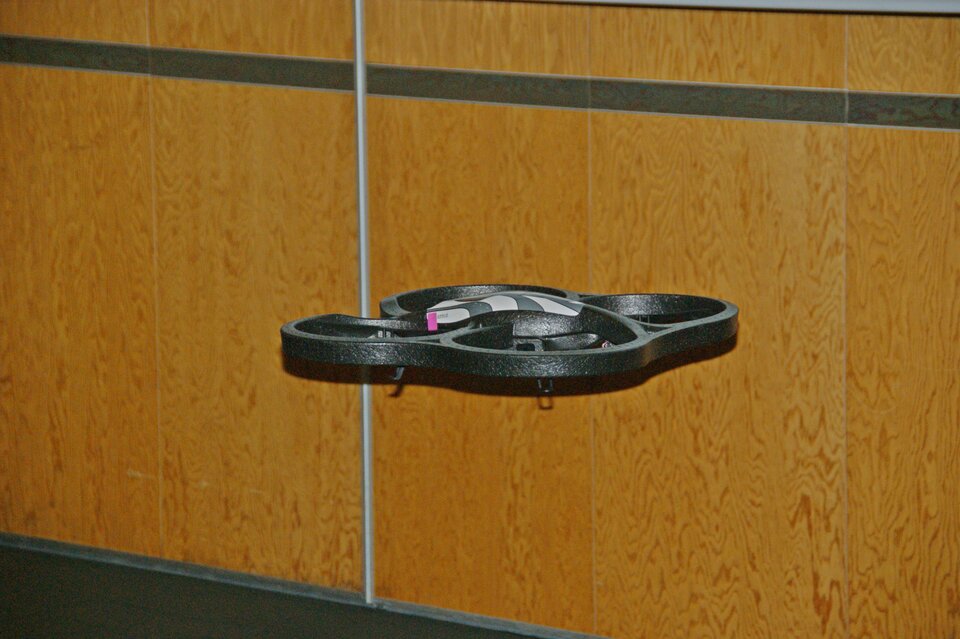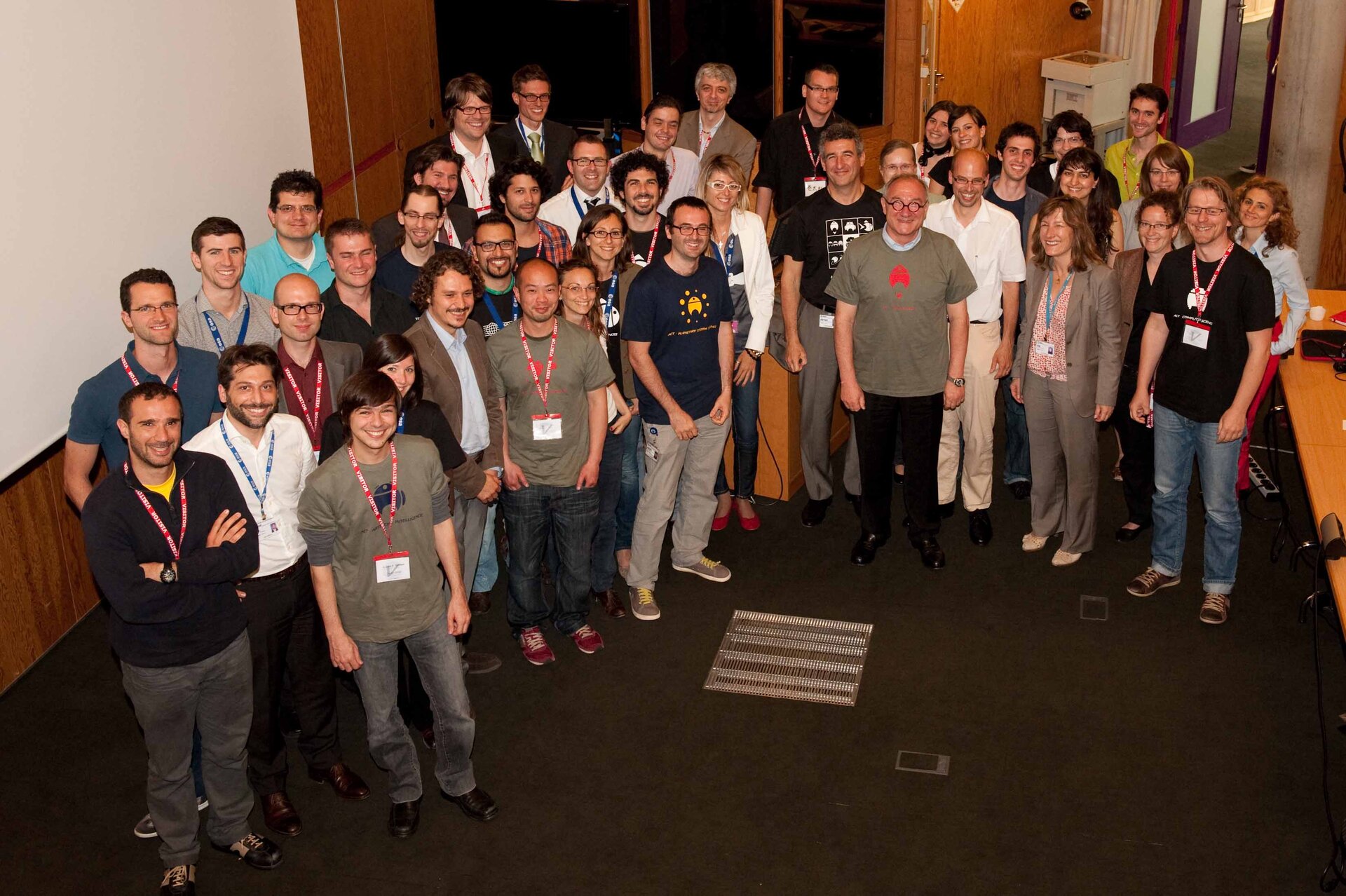A decade of future visions from ESA’s Advanced Concepts Team
Ion beams to clean up space debris, exotic metamaterials, fluid-like spacecraft made up of many tiny fractionated parts and planetary landers borrowing tips from bumblebees – ESA’s Advanced Concepts Team looked forward on its tenth anniversary, discussing creative ideas for space’s future.
Based at ESTEC, ESA’s technical centre in Noordwijk, the Netherlands, the team celebrated its first decade on 2–3 July, gathering former members and research partners from all across Europe, with guests from the US and Japan.
The first day was a self-organised ‘un-conference’, where participants nominated subjects for debate and the audience divided accordingly.
Discussions included the feasibility of wormhole travel, whether to use space-based solar power systems for weather control, why robots find it so difficult to walk and establishing a biosphere ‘ark’ on the Moon in case of terrestrial apocalypse.
The second day happened in a more usual setup, although with a remote-control drone demonstrating insect-inspired planetary exploration techniques and Alastair Reynolds as its keynote speaker – an ESTEC veteran who became a bestselling science fiction author.
ESA is used to looking to the future: the most ambitious space missions can take 10 years to come to fruition, using technology that might itself have taken 10 years to develop.
The job of the Advanced Concepts Team (ACT) is to peer even further ahead and beyond the horizon of current space activities, to research promising new ideas and approaches, including ‘disruptive’ innovations with the potential to change the way space is explored and used.

“For one or two years at a time, we take the best young researchers, place them in an interesting, stimulating environment, add coffee, and encourage them to ask the tough questions,” said Leopold Summerer, the team’s head.
“We say don’t ridicule, and don’t fear the ridiculous, do take risks – but stick to the scientific method.”
Franco Ongaro, now ESA’s Director of Technical and Quality Management, recalled his original setting up of the ACT and explained its guiding principle: “If anyone else is working on it, it isn’t for the ACT.”
Over the last decade the ACT has had 89 members, whose research has led to more than 400 scientific papers.
Through the Ariadna scheme – part of ESA’s General Studies Programme (GSP), ACT collaborates with academic research partners from all over Europe on advanced space systems and technologies.
Both the ACT and GSP Unit are part of ESA’s Preparation and Strategic Studies Office, run through the Directorate of Policies, Planning and Control.

Former head of ACT Andrés Gálvez, now leading the GSP Unit, explained how ESA is looking at competitions as a way of stimulating creative responses to set goals. He noted how historically such contests had variously given rise to the first longitude-measuring marine chronometer, tinned food and non-stop transatlantic travel, as well as – more recently – the suborbital space tourism industry through the Ansari X-Prize.
ESA’s first SysNova competitions were announced last month, challenging entrants to come up with low-cost techniques to modify the orbits of space debris, do the same with asteroids and develop life-support systems to sustain life out in interplanetary space.
Alastair Reynolds explained the relationship between science and science fiction was really two-way in nature: today’s mainstream scientific concepts such as terraforming and wormholes originated in yesterday’s science fiction – and the movie 2001 back in 1968 depicted a prototype iPad, highlighted in a copyright court case last year.




